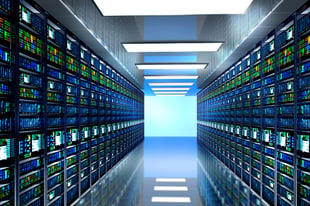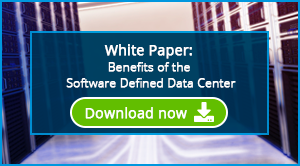 The hardware-driven data center will soon be unsustainable. If you think that statement may be too bold, look at the latest commentary on the benefits of the Software Defined Data Center (SDDC).
The hardware-driven data center will soon be unsustainable. If you think that statement may be too bold, look at the latest commentary on the benefits of the Software Defined Data Center (SDDC).
According to VMware, “The next generation of data centers is clearly software-defined: all infrastructure is virtualized and delivered as a service, with control entirely automated by software. To fully realize the potential of the software-defined data center, all infrastructure disciplines must therefore be virtualized, and put under automated control. [click to tweet] This creates a separate, more strategic motivation for software-defined storage.” Clearly, the hardware driven data center is well on its way to becoming an IT relic.
As a tech leader, you have likely read extensively about the SDDC in the form of articles, white papers, analyst reports and blog posts such as this one, and are convinced that SDDC would have a significant impact to your organization’s bottom line. Read on to learn why you’re right. Why is the Hardware-Driven Data Center Unsustainable?
1. High OpEx Expenditures
With a hardware-driven data center, the operational costs (OpEx) can be sky-high; it’s been found that a Software Defined Data Center can give organizations a streamlined and automated data center that can lower costs by as much as 56%. [click to tweet] Here are some of the costs traditional hardware requires:
- Increased manufacturing costs which are incorporated into the price structure
- The inability to recycle hardware for dissimilar projects
- The cost of overprovisioning by purchasing for tomorrow rather than today
- Training costs and dependencies on highly specialized personnel
- The incompatibility between systems
- The opportunity cost and risk of vendor lock-in
- Time consuming maintenance and support
- Costly upgrades and migrations
- Cooling and power costs
2. Hardware is Rigid
Making the move to gain the SDDC benefits of an adaptable, flexible environment isn’t a new concept. In 2012, VMware’s chief executive Pat Gelsinger noted in his keynote speech at VMworld Europe that today’s approach to the data center is a “museum of IT;” he emphasized the necessity of making all aspects of infrastructure flexible to meet changing business needs.
3. SDDC Allows for Complex Data Analysis
The hardware-driven data center’s physical confines make it difficult for organizations using this approach to collect, monitor, analyze and report large amounts of data. Since big data is becoming a high priority for IT leaders who want to gain insight into customer and user behavior, preferences and more, organizations want an infrastructure that will allow them to collect and streamline this information within a flexible managed environment.
4. Manual Efforts Waste Time and Resources
Planning, storage, compliance and monitoring all need to be completed manually when running a traditional data center; this is something that can demand a major time commitment from your IT team. Your organization can eliminate these wasted resources and expenditures by deploying a Software Defined Data Center. After the transition, all of these tasks become automated, controlled by the touch of a button, so the IT department can focus on other tasks which benefit the company’s bottom line.
While data center infrastructure must be driven by intelligence and it must provide redundancy and high availability, there are better alternatives to achieving these objectives than deploying expensive, high-end proprietary hardware. In an era in which IT departments are pressed to do more with less due to ever diminishing price margins stemming from global competition, the hardware driven data center is no longer sustainable; SDDC is the new paradigm to embrace.
If your organization has identified an initiative to move to an SDDC, we recommend reading the white paper, Managing the Software Defined Enterprise, which discusses:
- How to leverage commodity hardware in a software-defined environment
- The three step software transformation process required for the software defined enterprise
- The five distinct benefits provided by the software defined enterprise
Perhaps one of the greatest benefits of software defining the enterprise is that IT can begin to focus their time and energy on strategic value added projects. Download the white paper, "Benefits of the Software Defined Data Center" today.













